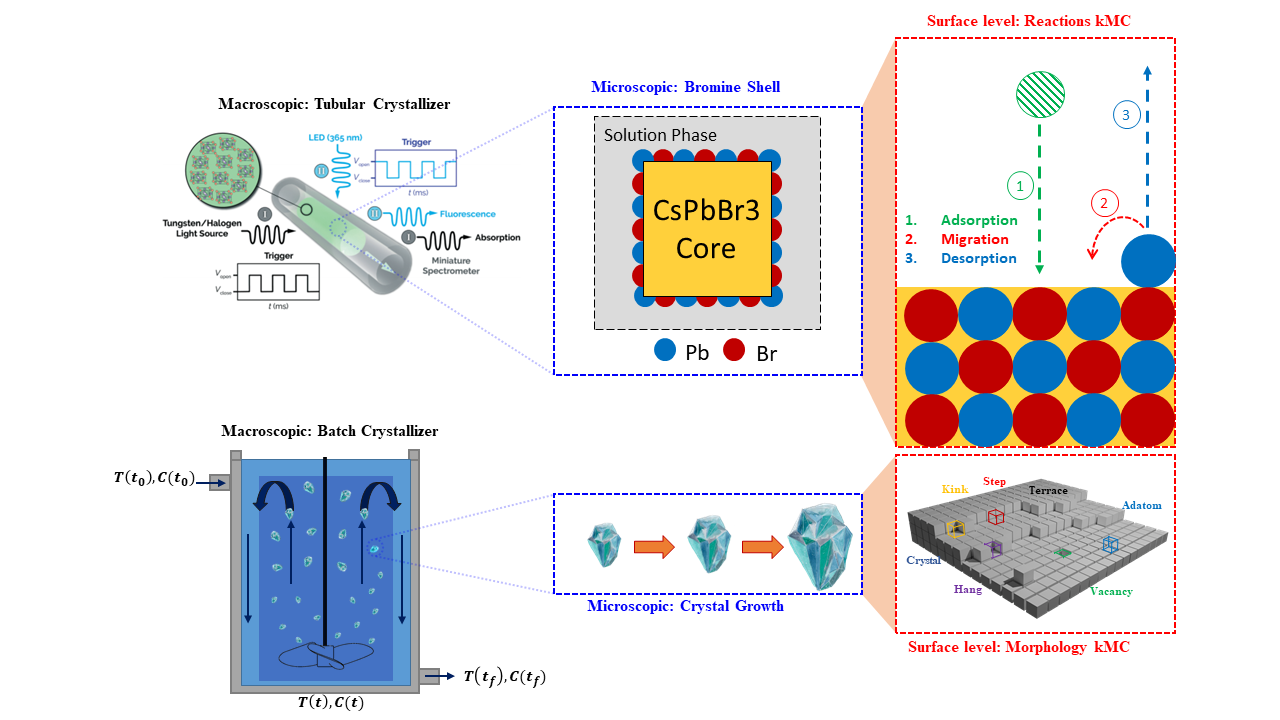
The research objective is to develop a multiscale model to explain the anisotropic growth of crystals which have applications as quantum dots, LEDs, optoelectronics, and pharmaceuticals. Recent literature shows that the size of nanocrystals (NCs) is inversely dependent on the bromine concentration which certainly is a very counter-intuitive thing as compared to traditional crystallization. To explain such growth dependence needs modification to traditional crystallization models. We could mimic this observation by incorporating physisorption, chemisorption, migration, and desorption events in a traditional solid-on-solid KMC model. The proposed modeling framework can be utilized broadly to explain the crystallization kinetics of the family of ABX3 perovskite NCs and Proteins, having a massive impact on the scientific community.
Literature:
Sitapure, N., Qiao, T., Son, D.H. and Kwon, J.S.I., 2020. Kinetic Monte Carlo modeling of the equilibrium-based size control of CsPbBr3 perovskite quantum dots in strongly confined regime. Computers & Chemical Engineering, 139, p.106872.
